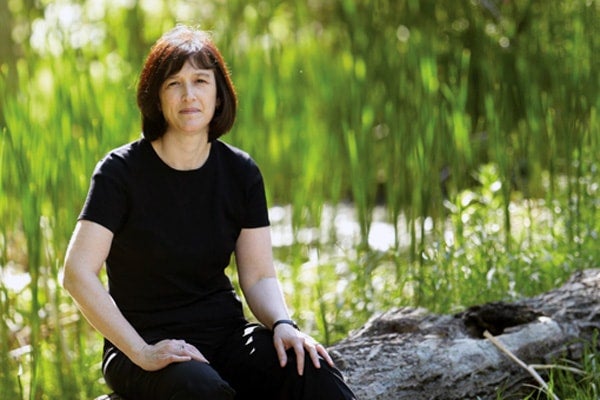
The hunt for Earth's missing carbon
Published: March 19, 2013
Many scientists today are engaged in a search for life on other planets. But University Professor Barbara Sherwood Lollar is wholly occupied with studying life here on Earth – life found far beneath the planet’s surface.
She is one of hundreds of scientists involved in the Deep Carbon Observatory (DCO), investigating the abundance of carbon believed to be hiding deep inside Earth, that only reveals its presence in an erupting volcano or when it transforms into gas, oil, or diamonds.
“Early results reveal a strange new world almost like science fiction, with colonies of microbes in fracture waters that are millions of years old, hydrogen-eating bacteria, natural gas seeping from the bedrock itself,” said Sherwood Lollar. “It is literally transforming our understanding of the planet, and our understanding of other planets in the process.”
In previous investigations, Sherwood Lollar has found that, nearly three kilometres below Earth’s surface, hydrogen is sustaining two kinds of processes – the production of methane from water-rock reactions and the creation of energy consumed by microbial life. As in some deep oceans vents, these microbes survive on chemical energy derived from geologic rock-water reactions in a subsurface carbon cycle rather than photosynthesis.
“The discovery of this deep biosphere raises fundamental questions regarding the source of carbon that, along with hydrogen, must be supporting it,” said Sherwood Lollar, a geochemist in the Department of Earth Sciences. “We want to find out when life colonized the subsurface, and how long these communities and this deep carbon cycle have been cut off from the surface.”
Studies of meteorites suggest the material that first formed Earth contained about three per cent carbon. Today, the confirmed sources of Earth’s carbon – humans, rocks such as limestone, and carbon dioxide in the oceans and the atmosphere – total only about 0.1 per cent. Sherwood Lollar and her colleagues at the DCO investigate the remainder that was sequestered deep inside the planet as it was formed, a portion of which is enabling life to thrive inside the rocky layers several kilometres below our feet.
“Of the 88 naturally occurring, long-lived elements on Earth, carbon stands alone,” said Robert Hazen, executive director of the DCO. “No other element contributes so centrally to the well-being and sustainability of life on Earth, including us humans.”
Deep Carbon Observatory scientists say estimates of carbon bound in the metallic core alone range from one-quarter to one per cent by weight. If one per cent proves correct, the core by itself holds four times more carbon than all known carbon reserviors in the rest of the planet, and 50 million times as much as that held in the flora and fauna on Earth’s relatively wafer-thin skin far above. (Below, a post-doctoral student collects samples from deep inside a gold mine. Photo courtesy K. Voglesanger.)
 Three years into a 10-year $500 million global collaboration, the DCO recently published Carbon in Earth, a 700-page volume detailing its investigation into deep carbon’s movement in the slow convection of Earth’s mantle, the percolating fluids of the crust, and the violent emission from volcanoes. Ninety per cent or more of Earth’s carbon is believed to be locked away or in motion deep underground – a hidden dimension of the planet as poorly understood as it is profoundly important to life on the surface.
Three years into a 10-year $500 million global collaboration, the DCO recently published Carbon in Earth, a 700-page volume detailing its investigation into deep carbon’s movement in the slow convection of Earth’s mantle, the percolating fluids of the crust, and the violent emission from volcanoes. Ninety per cent or more of Earth’s carbon is believed to be locked away or in motion deep underground – a hidden dimension of the planet as poorly understood as it is profoundly important to life on the surface.
Sherwood Lollar believes that the research also has implications for studying life beyond Earth, and says that signs of life on planets such as Mars are more likely to be found below the surface.
“The work that’s being done on Earth is a test case for exploration of other planets,” said Sherwood Lollar.



